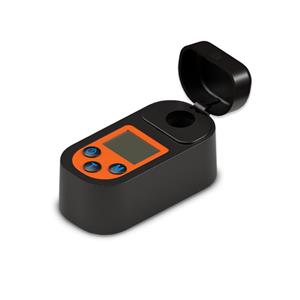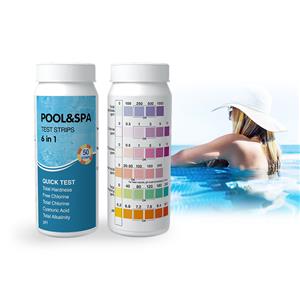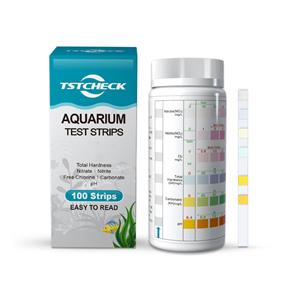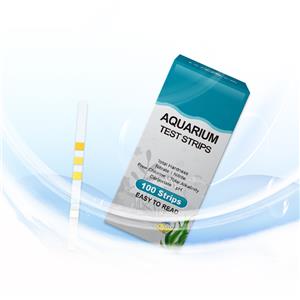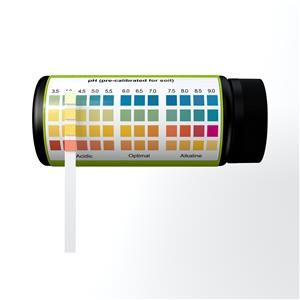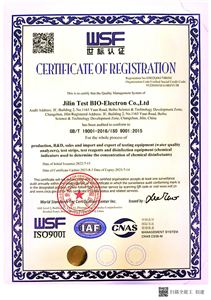Female Feminine Vaginal Ph Test Strips 3.0-6.5
Brand :TSTCHECK
Product origin :Changchun, CN
Delivery time :3-20 days
Supply capacity :300,000 bottles
What Is A Vaginal Ph Test: A Vaginal Ph Test Is A Simple Way To Measure How Acidic Or Alkaline Your Vaginal Secretions Are. Elevated Feminine Ph Levels May Signal A Vaginal Infection.(i.e., Itching, Burning, Unpleasant Odor, Or Unusual Discharge)
How To Test Vaginal Ph At Home: Before Testing, Wash And Dry Your Hands.use A Cotton Swab,gently Collect A Small Amount Of Sample And Apply It Into Strip. Wait For 15 Seconds And Compare The Results To The Color Chart.
Menstruation: During menstruation, the vaginal pH can temporarily increase, becoming more alkaline. This is because menstrual blood is slightly alkaline. The change in pH during this time can make the vagina more susceptible to infections, as the normal acidic environment that inhibits the growth of harmful microorganisms is altered.
Sexual Activity: Sexual intercourse can also affect the vaginal pH. Semen is alkaline, and its introduction into the vagina can raise the pH level. Additionally, the use of certain lubricants, especially those that are not pH - balanced, can disrupt the vaginal pH.
Hormonal Changes: Hormonal fluctuations, such as those that occur during pregnancy, menopause, or while taking hormonal contraceptives, can impact the vaginal pH. For example, during pregnancy, hormonal changes can lead to an increase in glycogen levels in the vagina. This provides more nutrients for lactobacilli, which may further lower the vaginal pH. In menopause, the decrease in estrogen levels can cause the vaginal mucosa to thin and the vaginal pH to increase, making women more prone to vaginal dryness and infections.
Antibiotic Use: Antibiotics, while effective in treating bacterial infections, can also have a negative impact on the vaginal flora. They can kill both harmful and beneficial bacteria, including lactobacilli. This disruption of the normal vaginal flora can lead to an increase in vaginal pH and an overgrowth of yeast or other pathogens, resulting in conditions like yeast infections or bacterial vaginosis.
Reagent - Impregnated Zone: The core of the test strip is the reagent - impregnated zone. This zone is made of a special, absorbent material, often a type of paper or a synthetic membrane. The material is impregnated with chemical reagents that are sensitive to the hydrogen ion concentration in the vaginal fluid. These reagents are carefully selected to provide a clear and distinct color change in response to different pH levels.
Backing Material: The reagent - impregnated zone is supported by a sturdy backing material. This backing material is typically made of a non - reactive plastic or a thick, non - absorbent paper. It provides structural support to the test strip, making it easy to handle during the testing process. The backing material also protects the reagent - impregnated zone from physical damage and environmental factors that could affect the accuracy of the test results.
High - Sensitivity Strips: The advanced vaginal pH test strips include high - sensitivity versions. These strips are designed to detect even minor changes in vaginal pH. They are particularly useful for women who are at a higher risk of vaginal health issues, such as those with a history of recurrent yeast infections or bacterial vaginosis. High - sensitivity test strips can detect pH changes as small as 0.1 units. This allows for early detection of any deviations from the normal pH range, enabling women to take preventive measures before a full - blown infection occurs.
Multi - Parameter Strips: Another type of advanced test strip is the multi - parameter strip. In addition to detecting the vaginal pH, these strips can also provide information about other aspects of the vaginal environment. For example, some multi - parameter strips can detect the presence of certain enzymes or metabolites that are associated with vaginal infections. By providing this additional information, these strips offer a more comprehensive picture of the vaginal health status. A woman using a multi - parameter strip can not only know her vaginal pH but also get an indication of whether there are any early signs of an infection, even if the pH is still within the normal range.
Yeast Infections: Yeast infections are a common vaginal health problem. They are often caused by an overgrowth of the fungus Candida albicans. A change in vaginal pH, usually an increase towards a more alkaline environment, can create a favorable condition for yeast to grow. By regularly using our vaginal pH test strips, women can detect any increase in vaginal pH early. If the pH starts to rise above the normal range, it may be an indication that the vaginal environment is becoming more conducive to yeast growth. This early detection allows women to take appropriate measures, such as using over - the - counter antifungal treatments or making lifestyle changes, to prevent the development of a full - blown yeast infection.
Bacterial Vaginosis: Bacterial vaginosis is another common vaginal condition. It is characterized by a shift in the normal vaginal flora, with a decrease in lactobacilli and an overgrowth of other bacteria. This shift is often accompanied by a change in vaginal pH, usually an increase. Our vaginal pH test strips can help women detect this change in pH associated with bacterial vaginosis. Early detection is crucial as bacterial vaginosis, if left untreated, can lead to more serious health problems, such as pelvic inflammatory disease (PID) in some cases.
Self - Monitoring: Vaginal pH test strips empower women to take an active role in their own health. Instead of relying solely on symptoms or waiting for a doctor's appointment to check their vaginal health, women can perform self - monitoring at home. This self - monitoring allows women to be more aware of their body's normal state and any changes that may occur. For example, a woman who is in tune with her normal vaginal pH can quickly notice if there are any significant deviations, even if she is not experiencing obvious symptoms. This sense of control over their health can be very empowering for women.
Informed Decision - Making: The results obtained from vaginal pH test strips can help women make more informed decisions about their health. For instance, if a woman detects a change in her vaginal pH, she can choose to consult a healthcare provider for further advice. She can also make lifestyle changes based on the test results. If the pH is slightly elevated, she may decide to avoid douching (which can disrupt the vaginal pH), change her diet to include more probiotic - rich foods (which can help maintain a healthy vaginal flora), or be more cautious about sexual activity until the pH returns to normal.
Alternative to Clinic Visits: Visiting a doctor's office or a clinic for a vaginal health check - up can be costly, especially if it involves multiple tests. Our vaginal pH test strips offer a cost - effective alternative. A pack of test strips is relatively inexpensive compared to the cost of a doctor's visit, laboratory tests, and any associated medical fees. Women can use these test strips at home to regularly monitor their vaginal pH, reducing the need for frequent clinic visits for routine checks. This cost - effectiveness makes it more accessible for women, especially those on a budget, to take care of their vaginal health.
Preventive Healthcare Savings: By using vaginal pH test strips for early detection of potential health issues, women can potentially save money in the long run. Early intervention for conditions like yeast infections or bacterial vaginosis can prevent the need for more expensive treatments later on. For example, treating a mild yeast infection at an early stage with over - the - counter medications based on the results of a pH test strip is much cheaper than treating a severe, recurrent yeast infection that may require prescription medications and multiple doctor's visits.
Simple Testing Procedure: Our vaginal pH test strips are designed to be extremely user - friendly. The testing procedure is straightforward. The woman simply inserts the test strip into the vagina for the recommended time (usually a few seconds), removes it, and immediately compares the color of the strip with the provided color - comparison chart. There is no need for any special skills or equipment. This simplicity makes it easy for women of all ages and backgrounds to use the test strips. Even women who have no prior experience with medical testing can easily perform the test accurately.
Discreet and Convenient: The test strips are also discreet and convenient to use. They are small and can be easily stored in a purse, a bathroom cabinet, or a bedside drawer. Women can perform the test in the privacy of their own homes, at a time that is convenient for them. This discretion and convenience factor is important for many women who may feel uncomfortable discussing or addressing vaginal health issues in a more public or clinical setting.
Hygiene: Before using the vaginal pH test strip, it is essential to maintain proper hygiene. Wash your hands thoroughly with soap and water. This helps to prevent the introduction of any external contaminants into the vagina, which could affect the test results.
Timing: The best time to test the vaginal pH is usually in the morning, before urinating or having sexual intercourse. This is because the vaginal pH can be affected by various activities throughout the day, such as urination, sexual activity, or the use of vaginal products. Testing in the morning provides a more accurate representation of the baseline vaginal pH.
Insertion: Gently insert the test strip into the vagina, ensuring that the reagent - impregnated zone is fully exposed to the vaginal fluid. Insert the strip about 1 - 2 inches into the vagina. Avoid touching the reagent - impregnated zone with your fingers to prevent contamination.
Dwelling Time: Leave the test strip in the vagina for the specific time indicated in the product instructions. This is usually around 5 - 10 seconds. It is important not to leave the strip in for too long or too short a time, as this can affect the accuracy of the color change and the resulting pH reading.
Color Comparison: Immediately after removing the test strip from the vagina, compare the color of the reagent - impregnated zone on the strip with the color - comparison chart provided in the package. Make sure to do this in good lighting conditions for an accurate comparison.
Record - Keeping: It can be helpful to keep a record of the test results over time. You can use a notebook or a mobile app to note down the date of the test, the pH value obtained, and any symptoms or factors that you think may have affected the result, such as recent sexual activity or menstruation. This record - keeping can help you identify any patterns or trends in your vaginal pH over time.
Temperature and Humidity: Proper storage of vaginal pH test strips is crucial to maintain their accuracy and functionality. Store the test strips in a cool, dry place, away from direct sunlight and heat sources. High temperatures and humidity can cause the reagents on the test strips to degrade, leading to inaccurate results. The ideal storage temperature is between 2 - 30°C (36 - 86°F), and the relative humidity should be kept below 60%.
Protection from Contamination: Keep the test strips in their original packaging until you are ready to use them. The packaging is designed to protect the strips from moisture, air, and other contaminants. Avoid opening the package until just before use. If the test strips come with a desiccant packet, do not remove it from the package. The desiccant helps to absorb any moisture and keep the strips in optimal condition.
Expiration Date: Each package of vaginal pH test strips has an expiration date printed on it. Under proper storage conditions, the test strips are typically valid for 1 - 2 years from the date of manufacture. It is important to check the expiration date before using the test strips. Using expired test strips can lead to inaccurate results, which may give you false information about your vaginal health. If the test strips have been stored in less - than - ideal conditions, their performance may degrade even before the expiration date, so it's always best to err on the side of caution and use fresh test strips.
Factory. We speicalize in producing water test strips for years....more
-
Download
- Category.pdf




